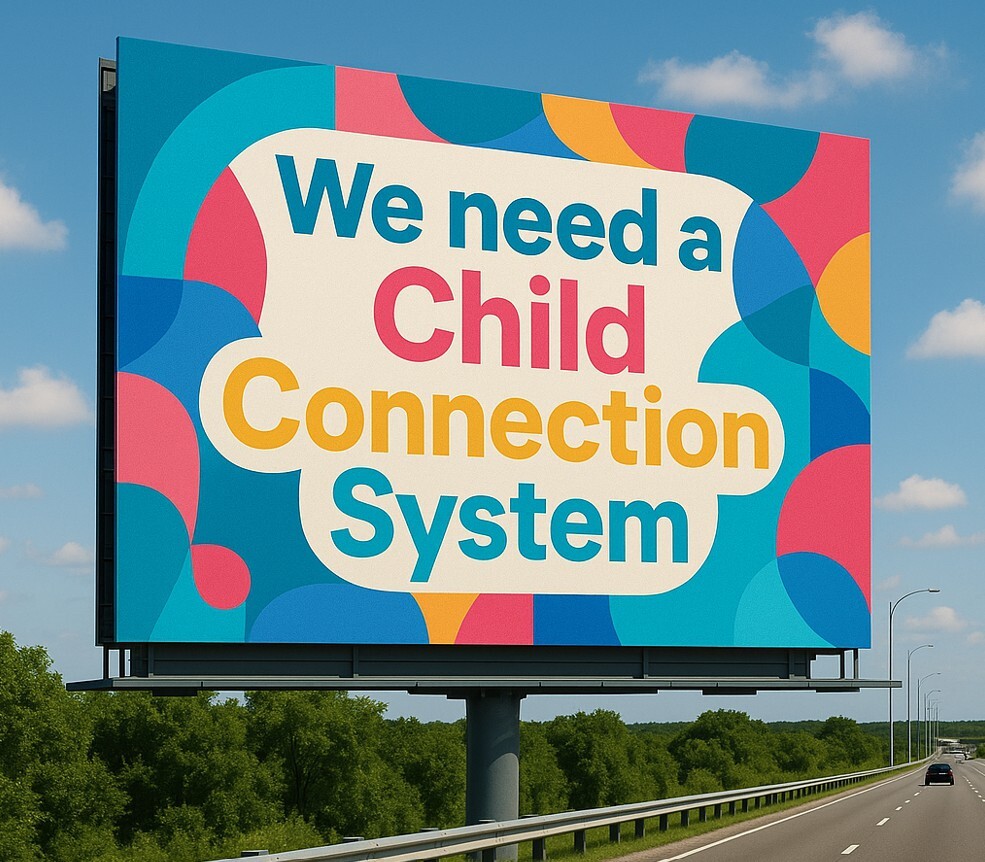What is a Child Connection System?
Protection comes through connection
The neuroscience is clear: consistent, stable and positive relationships are essential for children who have experienced maltreatment. These relationships help them move beyond hypervigilance and begin to heal.
That’s why we’re calling for a shift to a Child Connection System – a relationships-first approach to supporting children and families that:
- is community-led
- reduces unnecessary bureaucracy
- is financially sustainable
- makes government the last resort, not the first.

What’s wrong with the current Child Protection System?
Most people believe that governments can step in and care for vulnerable children, protect them and keep them safe. But this is a myth:
- The current child protection system paradoxically reduces children’s safety by disrupting the relationships that are essential to their wellbeing and resilience.
- Our institutions have forgotten the centrality of relationships. We’ve been careful about the needs of the system, but careless about relationships.
- Despite best intentions, a child protection system is designed to protect itself. Its purpose is to keep adults and institutions safe. Adding more paperwork doesn’t make kids safer. We are putting bureaucracy before our humanity.
- NSW’s $3.2 billion surveillance, investigation and removal system is overwhelmed*, operating over budget, and depriving too many children of the connections they need to thrive.
*For example, see Oversight of the child protection system NSW Audit Office report 2024 and NSW Ombudsman Protecting Children At Risk report 2024
Why is a Child Connection System a better way to care for kids?
- A Child Connection System would make children safer by building and strengthening connections with people – family, kin, carers and community - who have their back. The more attuned adults a child has, the safer they are from harm, as unsafe individuals are more likely to be identified.
- We need to care more about a child’s relationships, and care less about the system.
- The most important questions should be: “What can I do to help?” and “Is what I did helpful?” to the people who we are there to support.
- The depth of knowledge in First Nations ways of knowing, being, and doing, can show the broader care system not only what is best for First Nations children, but for all children. In a Child Connection System, First Nations organisations would have self-determination and community control, so they have the power and resources to lead relational, wrap-around care for First Nations children and families.
- A Child Connection System is workable and sustainable because it’s innately human. It naturally aligns safety with relationships – protecting children with strong, supportive bonds, and cutting unnecessary red tape to make space for genuine connection.
- Because it’s human, it’s also messy, imperfect, and often painful. It means sitting with trauma and showing up anyway. It’s about real relationships, instead of relational deprivation.
Here’s a comparison of the two systems:

Making it happen
This vision for a Child Connection System is set out in the collaborative report Supporting Children and Families to Flourish, our partnership with the James Martin Institute for Public Policy.
The report brings existing work together, drawing on policy experts, practitioners, First Nation-led organisations, lived experience and frontline workers. Over 100 research papers and case studies from Australia and beyond provide a strong evidence base for programs and practices that prioritise relationships.
The report tells us what the future could look like but does not deliver us there. The Centre for Relational Care is working alongside people who work in, or are impacted by child protection, in collaborative co-design of this reimagined care system, guided by the wisdom of lived experience.
We are targeting three key drivers of change that everyone in the sector can progress now:
- Measure what matters – which is the quality of relationships and lived experience.
- Reframe risk – to include the risk of relational deprivation, and not just ‘system’ risks that protect adults and institutions.
- Put people over paperwork – keep rules to a sensible minimum, so time goes to children not bureaucracy.
If you’d like to be involved, contact us at change@centreforrelationalcare.org.au
